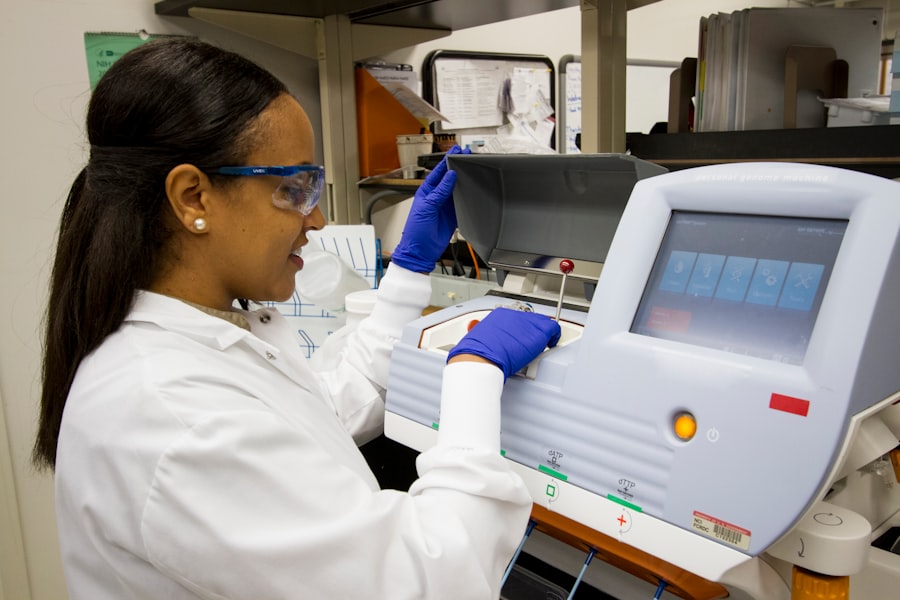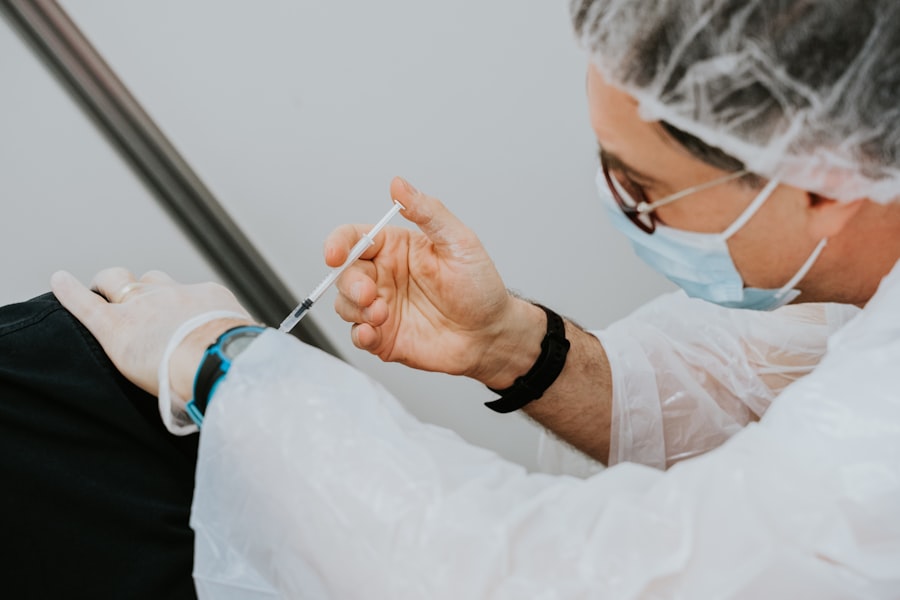When you think about lasers, you might envision their use in cutting-edge technology, medical procedures, or even entertainment. However, it is crucial to recognize that laser exposure carries inherent risks that can affect both operators and patients. Lasers emit concentrated beams of light that can cause harm if not handled properly.
The intensity of the light can lead to severe injuries, particularly to the eyes and skin. Understanding these risks is the first step in ensuring safety in environments where lasers are utilized. You may not realize that the potential for harm varies significantly depending on the type of laser and its application.
For instance, high-powered lasers used in industrial settings can cause immediate and irreversible damage, while lower-powered lasers might pose a lesser threat but still require caution. The wavelength of the laser also plays a critical role in determining its risk level. Ultraviolet lasers can cause skin burns, while infrared lasers can penetrate deeper into tissues, leading to more severe internal injuries.
By familiarizing yourself with these risks, you can better appreciate the importance of adhering to safety protocols.
Key Takeaways
- Laser exposure can pose serious risks to both operators and patients, including eye injuries and skin burns.
- Long-term health effects of laser radiation may include increased risk of cataracts and skin cancer.
- Laser operators should follow strict safety measures, including wearing protective eyewear and clothing, and ensuring proper ventilation in the workspace.
- Patients and clients receiving laser treatments should be informed of potential risks and given proper protective gear during the procedure.
- Different industries have specific regulations and guidelines for laser safety, and it is important for operators to be aware of and comply with these standards.
Long-term Health Effects of Laser Radiation
The long-term health effects of laser radiation are an area of growing concern as more industries adopt laser technology.
For instance, repeated exposure to certain wavelengths can result in cumulative damage to the eyes, potentially leading to conditions such as cataracts or retinal burns.
Moreover, there is ongoing research into the potential carcinogenic effects of certain types of laser radiation. While definitive conclusions are still being drawn, some studies suggest that long-term exposure could increase the risk of developing certain cancers.
This is particularly relevant for those working in environments where lasers are frequently used without adequate protective measures. As you consider your own exposure or that of your colleagues, it’s essential to remain informed about these potential long-term health effects and advocate for appropriate safety measures.
Occupational Hazards and Safety Measures for Laser Operators

As a laser operator, you face unique occupational hazards that require a comprehensive understanding of safety measures. The nature of your work often involves handling powerful equipment that can cause serious injuries if mismanaged. One of the primary hazards is eye exposure; even brief contact with a laser beam can result in permanent vision loss.
Therefore, it is vital to wear appropriate eye protection specifically designed for the wavelength of the laser you are using. In addition to eye protection, you should also be aware of other safety measures that can mitigate risks. Implementing engineering controls, such as proper ventilation systems and safety interlocks on laser equipment, can significantly reduce the likelihood of accidents.
Regular maintenance and inspections of laser devices are also crucial in ensuring they operate safely and effectively. By prioritizing these safety measures, you not only protect yourself but also create a safer working environment for your colleagues.
Potential Risks for Patients and Clients Receiving Laser Treatments
| Potential Risks | Description |
|---|---|
| 1. Burns | Excessive heat from the laser can cause burns on the skin. |
| 2. Scarring | Improper use of the laser can lead to scarring of the skin. |
| 3. Hyperpigmentation | Darkening of the skin may occur as a result of laser treatment. |
| 4. Hypopigmentation | Lightening of the skin may occur as a result of laser treatment. |
| 5. Eye Injury | Improper use of laser near the eyes can cause injury to the eyes. |
When patients or clients receive laser treatments, they trust that the procedure will be safe and effective. However, it is essential to recognize that there are potential risks involved in these treatments. For instance, improper use of lasers during medical procedures can lead to burns, scarring, or even more severe complications.
As a practitioner or technician, you must be aware of these risks and take steps to minimize them. Informed consent is a critical aspect of patient safety when it comes to laser treatments. You should ensure that clients are fully aware of the potential risks and benefits before proceeding with any procedure.
This transparency not only builds trust but also empowers patients to make informed decisions about their care. Additionally, following established protocols and guidelines for laser treatments can help mitigate risks and enhance patient safety.
Regulations and Guidelines for Laser Safety in Different Industries
Laser safety regulations and guidelines vary across industries, reflecting the diverse applications and associated risks of laser technology. In healthcare settings, for example, organizations like the American National Standards Institute (ANSI) provide specific guidelines for the safe use of lasers in medical procedures. These guidelines outline best practices for equipment usage, training requirements for personnel, and safety measures to protect both patients and staff.
In industrial settings, regulations may focus more on operational safety and environmental controls. The Occupational Safety and Health Administration (OSHA) has established standards that govern the use of lasers in workplaces, emphasizing the need for proper training and protective equipment. As someone involved in any industry utilizing lasers, it is crucial to stay informed about these regulations and ensure compliance to maintain a safe working environment.
Protective Measures and Equipment for Minimizing Laser Exposure

To minimize laser exposure effectively, various protective measures and equipment are available that you should consider implementing in your workplace. Personal protective equipment (PPE) is essential; this includes specialized eyewear designed to filter out harmful wavelengths while allowing safe visibility during operations. Depending on the type of laser used, you may also need protective clothing or barriers to shield your skin from potential burns.
In addition to PPE, engineering controls play a significant role in reducing exposure risks. For instance, using beam enclosures or protective curtains can help contain laser beams within designated areas, preventing accidental exposure to unauthorized personnel. Regular training on the proper use of this equipment is vital; ensuring that everyone understands how to use protective measures effectively will enhance overall safety in your environment.
Monitoring and Surveillance of Laser Safety in the Workplace
Monitoring and surveillance are critical components of maintaining laser safety in any workplace where lasers are used. Regular assessments can help identify potential hazards before they lead to accidents or injuries. You should consider implementing routine inspections of laser equipment and workspaces to ensure compliance with safety standards and identify any areas needing improvement.
Additionally, establishing a culture of safety within your organization encourages everyone to take responsibility for monitoring their surroundings. Encouraging open communication about safety concerns allows team members to report potential hazards without fear of reprisal. By fostering this environment, you contribute to a proactive approach to laser safety that benefits everyone involved.
Educating and Training Personnel on Laser Safety Practices
Education and training are paramount when it comes to ensuring safe practices around lasers. As someone involved in this field, you should prioritize comprehensive training programs for all personnel who work with or around lasers. These programs should cover essential topics such as understanding laser classifications, recognizing hazards, and implementing safety protocols.
Moreover, ongoing education is just as important as initial training. As technology evolves and new research emerges regarding laser safety, keeping your knowledge up-to-date is crucial. Regular refresher courses can help reinforce safe practices and ensure that everyone remains vigilant about potential risks associated with laser exposure.
By investing in education and training, you not only protect yourself but also contribute to a culture of safety within your organization that prioritizes the well-being of all employees and clients alike.
If you are considering laser hair removal and are concerned about potential long-term health risks, you may want to read the article on inlaserhairremoval.com that discusses the safety of laser treatments. It is important to educate yourself on the topic before undergoing any procedure. Additionally, you can customize your interests and learn more about laser hair removal by visiting inlaserhairremoval.com. If you have any specific questions or concerns, feel free to reach out to the professionals at inlaserhairremoval.com for more information.
FAQs
What are the potential long-term health risks of laser use?
Laser use can potentially cause long-term health risks such as eye damage, skin damage, and potential risk of cancer due to prolonged exposure to certain types of lasers.
How can we ensure there aren’t any long-term health risks to laser use?
To ensure there aren’t any long-term health risks to laser use, it is important to follow safety guidelines, use appropriate protective gear such as goggles, limit exposure time, and use the correct type of laser for the intended purpose.
Are there regulations in place to minimize long-term health risks of laser use?
Yes, there are regulations in place to minimize long-term health risks of laser use. These regulations include safety standards for laser devices, guidelines for laser use in medical and industrial settings, and restrictions on the sale and use of certain types of lasers.
What should individuals do to protect themselves from potential long-term health risks of laser use?
Individuals should educate themselves about the potential risks of laser use, use appropriate protective gear, follow safety guidelines, and seek professional training if using lasers in a professional setting. Regular eye exams are also recommended for those who work with lasers.






